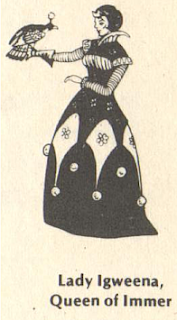Wednesday, October 20, 2021
Wednesday Comics: DC, January 1980 (wk 2, pt 1)
Monday, October 18, 2021
Dark Sun: The Bandits of the Crimson Oasis
The last two sessions of our Forbidden Lands Dark Sun campaign saw the party (now having made the acquaintance of the dune peddler Egon the Honest) taking yet another job from the dwarf merchant Urum ath Wo. Urum believes he has reliable information regarding the rumored treasure of the merchant prince Darom Madar said to be hidden in the remote Canyon of Golothlay.
Urum plans to do this deal separate from his work for House Zawir, hoping to strike out on his own. Egon negotiates the party not just decent pay, but a share in future profits.
The arrangements made, the small caravan heads out for the Silver Springs Oasis with the party acting as guards and scouts. At Silver Springs they plan to palaver with Chief Toramundi of the Silver Hands, the elven tribe that holds the Springs. Urum believes he has specific knowledge of the desert that might be helpful.
Along the way, they avoid an erupting swam of baazrag, and notice a halfling spying on them. Eowen the Elf tracks the halfling back to a small oasis, but finds whoever was there has already left. Fearing an attack, she heads back to the caravan, but is waylaid by the halfling. She kills the halfling, but hears that a fight has begun in the arroyo the canyon the caravan was passing through.
The others are set upon by a dwarf ornamented like a sun priest, and three human bandits. After a short battle, the dwarf and one of the humans are dead. The other two surrender. Looting the bodies, they take studded leather armor and find a pouch with two potion fruit.
Putting some distance between themselves and the canyon, they decide to stop for the the night and make camp.
Saturday, October 16, 2021
The Sword & Sorcery Paperback Renaissance
Likely touched off by the success of the Lancer (and Ace) Conan paperbacks, the '70s was a Golden Age of Sword & Sorcery paperback fiction. Okay, most weren't that good, admittedly--but there was stuff like Karl Edward Wagner's Kane, Charles Saunders' Imaro, and a number of works by Tanith Lee that were good, just to name a few. Also, even books that weren't all that great were often graced with Frazetta covers.
These gradually disappeared in the 80s. Sword & Sorcery was a genre born in short fiction, and while perhaps workable in slimmer novels, the multi-volume, thick fantasy series was ill-suited to telling tales of wandering swordsmen or rogues. The small press magazines that published this sort of fiction were already rare and soon disappeared entirely.
Amazon and ebooks have provided an avenue for the genre's return in something resembling its 70s glory. A number of small presses (and self-publishers) put out this sort of material with suitable, throwback covers. I confess to not having read many (well, any) of these volumes yet, though I do have a couple on my list. What's more exciting, though, is some new collections of stuff I already like.
Sorcery Against Caesar: The Complete Simon of Gitta Short Stories collects all of Richard Tierney's Sword & Sorcery tales of his version of Simon Magus of New Testament fame. He mostly fights Lovecraftian menaces cloaked in pseudo-historic references. Chaosium had a collection a couple of decades ago, but there's wasn't complete.
Charles Saunders has passed on, but his Imaro novels are back in print, and then there's Nyumbani Tales, a collection of non-Imaro stories in the same setting.
Friday, October 15, 2021
Westernesse
While traveling some for work, I listened to Vance's Suldrun's Garden as an audiobook. It gave me an idea for a setting:
Wednesday, October 13, 2021
Wednesday Comics: DC, January 1981 (wk 1, pt 2)
Sunday, October 10, 2021
Minaria: Immer
Thursday, October 7, 2021
The Small Setting
For some reason, the idea of a small setting has long had some appeal for me. Something like the British Isles or any other single country, sure, but also even smaller, like an single province of a country (Averoigne, Poictesme)--or smaller still, like an immense Gormenghast-esque castle and its environs.
Obviously, hexcrawling has limited to no utility in a setting like this, and it's probably not grist for a long term campaign, if you do the usual D&D activities. But you know, most campaigns I play in or run don't seem to be long term enough that that would create into a problem. My Land of Azurth campaign will be 7 years old this month, and while the players have now ventured beyond Yanth Country, I feel like we could easily still be in that terrain (roughly the size of the state of Georgia), allowing for the brief planar, time travel, and underground other-realm excursions they've done.
What's the appeal to me of the small setting? I'm not exactly sure. Perhaps it's the thought of accreting a lot of granular detail in one part of a setting in a way players will actually find interesting versus that detailed city supplement approach where most of it never gets used. There's also the possibility of developing more of a robust "supporting cast" and layering in mysteries big and small. It also makes adventure locales less likely to be one-offs, encouraging the portrayal of them as living, changing places.
In short, maybe, it's bringing some of the aspects of the megadungeon to a setting that isn't centered around a megadungeon.




























